I did the Golden triangle itinerary tour plenty of times during the past ten years. India is vast, and there is so much to see that it is hard to decide on how to make the most of your visit. If you are the first time in India, it is good to start with the Golden Triangle because it is packed with historic sites. But if you come to India once in your life, and you only visit the Golden Triangle (Delhi-Agra-Jaipur), then you only scratch the surface. It is a great option to extend your two-week itinerary with the Golden Triangle and add the peaceful Orchha, the spiritual Varanasi, and Amritsar near the Pakistani border to the list.
I have put together the most rewarding 2-weeks program for you with a local expert and friend including the Golden Triangle, and much more than that. My purpose is to help you become an insider and not just a visitor. If you want to complete the itinerary without a rush, add some days to that when you feel.
- What you should know before your two-week trip to the Golden triangle
- What is the best time for the tour of the Golden Triangle?
- Arrival at the Indira Gandhi International Airport in Delhi
- The best two-week itinerary including the Golden triangle
- 1. day: Discover the capital, Delhi
- How to travel from Delhi to other cities in India
- 2. day: Delhi- Jaipur (265km, 5 hours)
- 3. day: Jaipur, the Pink City
- 4. day: Jaipur- Fatehpur Sikri- Agra (245kms, 5hours)
- 5. day: Agra
- 6. day: Agra–Jhansi-Orchha
- 7. day: Orchha – Khajuraho (178 km, 4 hours)
- 8. day: Khajuraho
- 9. day: Varanasi, the most divine city of India
- 10. day: Varanasi
- 11. day: Delhi
- 12. day: Delhi-Amritsar
- 13. day: Amritsar
- 14. day: Amritsar – Delhi
- Useful resources for your travel to India
- Read more articles about India
What you should know before your two-week trip to the Golden triangle
- Be flexible with your program because anything can happen in India. Traffic jams are common, and you can get stuck for hours on the highway or in the city. Once, the only highway between Agra and Jaipur got closed because the Jats were on strike. There was no other way. Some groups stuck in their hotels for several days. It does not happen every day of course, but the police cannot keep things as much under control as in developed countries. Just be patient!
- The Golden Triangle is the most touristic part of India. The sellers are pushier than anywhere else. As soon as you get out of the vehicle, they rush to you. Stay calm, do not look at the products they want to sell. If they see a little sign that you are interested, they do not let you go. If you seem uninterested, they switch to other customers.
- Take care of your belongings. There are so many factors (noise, crowd, traffic) that will divert your attention, and the hawkers are masters of spotting that.
- Always bargain. In some bazaars, you can bargain up to 50% of the original price.
- Do not use public transportation at night, especially if you are a woman.
- Always change enough local money, rupees. In India, they do not accept dollars, euros, or other currencies, unless you shop in a bigger showroom.
- Unless your stomach is sensitive, you should not be scared to try Indian street food. Some of the tiny shops serve the freshest and delicious snacks. But stay away from the roadside woks full of hot oil that lack basic hygiene. These can cause grave problems for you. If anything happens, go to the local pharmacy and take “the medicine for stomach problem”. One pill will works wonders. Besides, take some spirits from home, or grab some local rum and have a sip after your meals as a preventive.
- It is possible to travel solo in India by bus and train. But if you do not feel comfortable in a crowd, or you are more sensitive to cleanness, rent a car with a driver or go for a package tour.
- There are no particular dressing rules in India. But out of respect to local culture, always dress up modestly, covering at least your knees and shoulders. A Western woman exposing her body gives the false sign for local uneducated men that she is open to flirting.
- Buy your sim card upon arrival at the airport as it can get complicated later.
- Leave a small donation in the temple you visit (10-20 INR)
- Try not to get distracted by the piles of rubbish and dirtiness that surround you, but focus on the unique culture, the helpful and smiling people, and all that India teaches you.
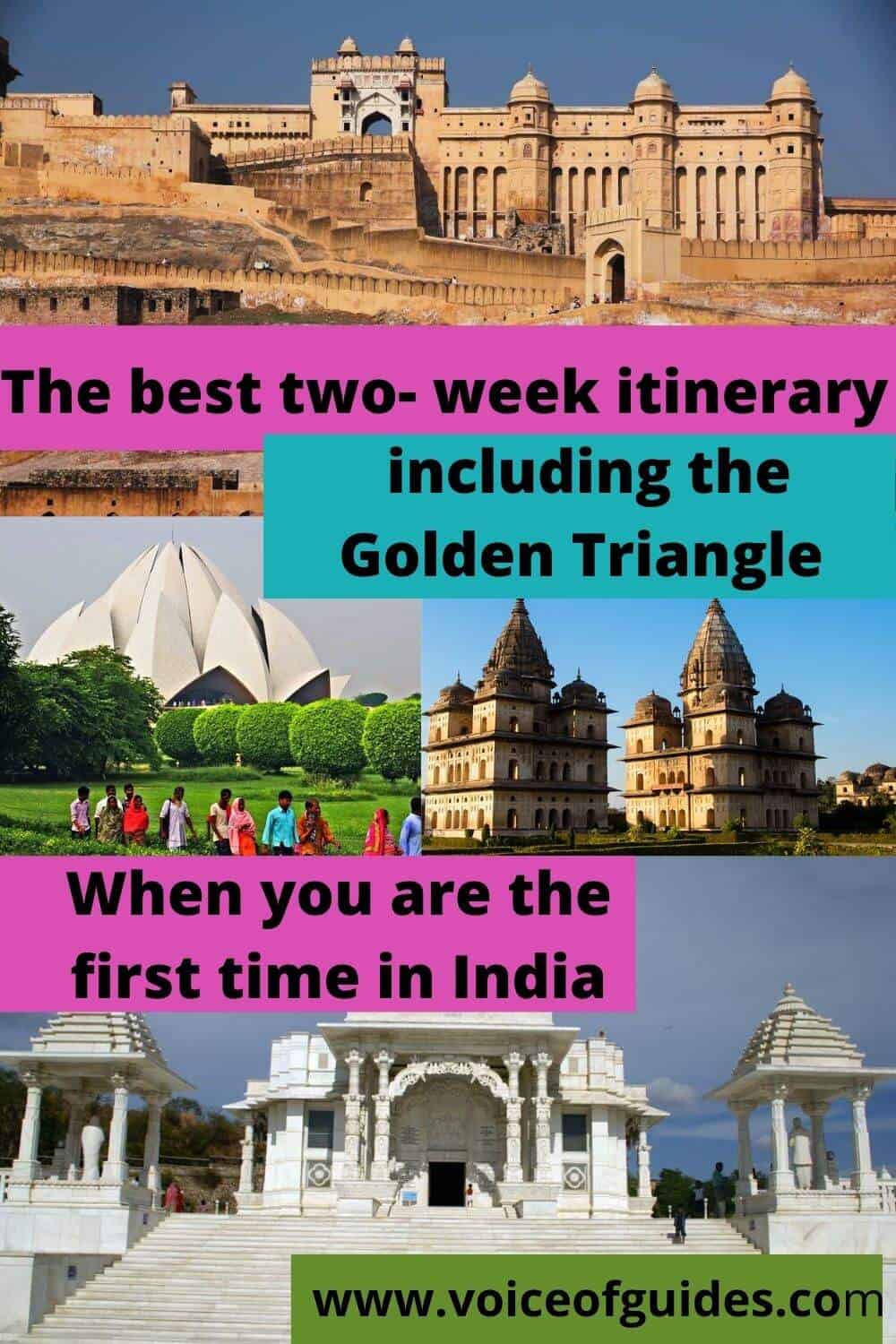
What is the best time for the tour of the Golden Triangle?
October-March is the best period to visit the Golden Triangle. October and March are hot and dry. Although Delhi is always some degrees colder, during these two months the temperature can reach 30°C or more in Jaipur. In December and January, the temperature drops sharply. It usually means nice autumn weather in Delhi (10-15°C) and around 20°C in Jaipur. But there are some colder winters when the temperature drops to 1-10°C in December and January. Since the wintertime is short, hotels and homes do not have any heating. Some big hotels give you heaters, but not all of them are prepared with that.
If you do not mind dressing up warm and even taking your winter jacket sometimes, then December and January are also good times. However, the visibility also gets worse. Mornings can start in a dense fog, and the weather clears up a couple of hours later.
Travel to the Golden Triangle during monsoon time
No, you are not crazy to travel to India during the rainy season, but it is not for everybody. It will not be raining cats and dogs all day, but you often get wet. At the religious monuments, you have to take off the shoes and walk on a wet floor. Plus, you may not see things in the sunshine as you imagined. But the prices drop, and you can save so much money if you complete the tour outside peak season. But in the northernmost part of India, the Buddhist Ladakh is ideal at this time of the year.
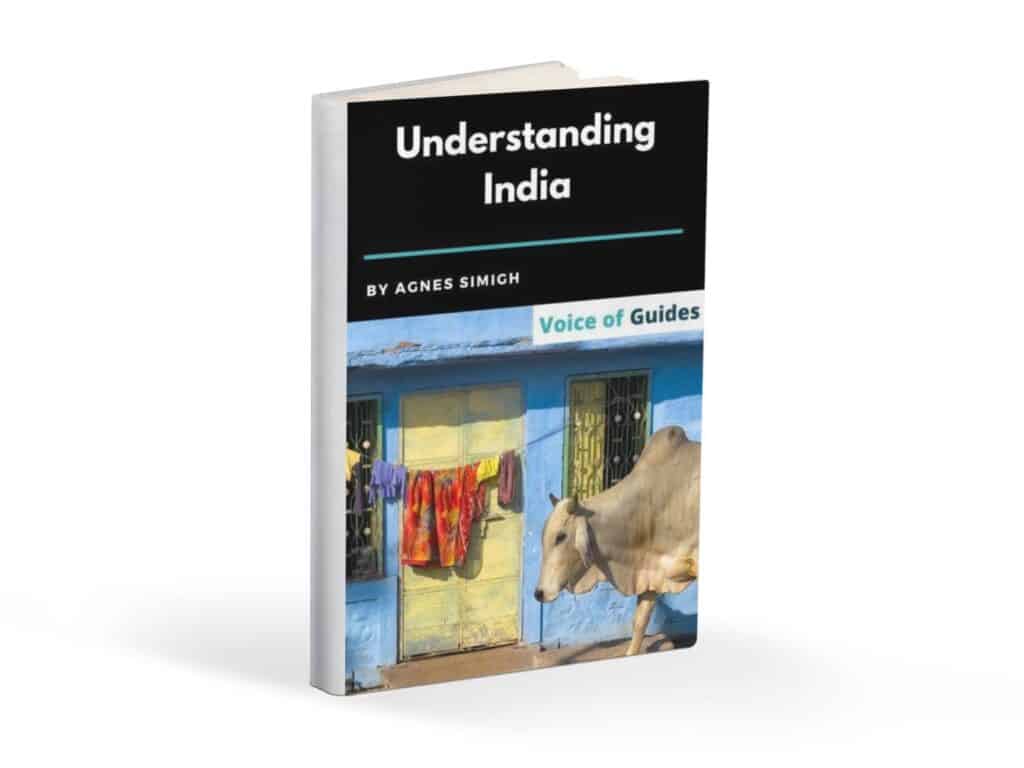
How to get an Indian tourist e-visa
An e-visa is necessary to travel to India with the following documents:
- Passport valid for at least six months from the intended arrival date in India, and two blank pages
- An image of the relevant page of the passport
- A recent passport-size photograph
- Credit or debit card to pay the India online visa fee
- An email address to receive the approved India Tourist e-Visa document.
Upon arrival to India, you have to present a printed copy of the Approved Tourist e-Visa.
You can apply for the e-visa here: https://www.indiae-visa.com/
Arrival at the Indira Gandhi International Airport in Delhi
If you cover the Golden Triangle of India, you will arrive at the Indira Gandhi International Airport in the capital, Delhi. You will find several counters for passport and visa checks. There is a separate room for handling e-visas with additional counters. You join the queue here and wait for your turn. At the counter you have to show:
- Your passport
- The printed copy of the approved e-visa
- The filled immigration form – the immigration form you either get from the stewardesses on the plane or if they do not have one, you can pick one upon arrival. You will see the tables with plenty of small-size immigration forms around the e-visa room. The form asks for your address and phone number, your planned itinerary, your date of arrival and departure.
Important: In almost every case, they take a fingerprint, which is always troublesome. The scanner never works, and you have to repeat it many times. Be patient and try until they retrieve a valid fingerprint. They also underestimate the number of officers needed for the arriving foreigners. If there are many in the queue and only a few officers, then it can take a long to get through.
“Be patient in India!”- and this starts already at the airport.
The Multiple entry electronic visa for India:
- Allows a 90-day stay
- Valid for 1 year from approval
- Can be used at select ports of entry in India
- For tourism purposes
Get a SIM card at the airport
It is complicated to get a Sim card in the cities for foreigners. If you do not want to rely on a wifi connection and need permanent access to the internet, you should buy one at the airport. Head to the provider of Airtel or Vodafone in the arrival lounge. You show your passport with your visa to get a sim card at the airport. They charge 900 INR for a SIM card for 1-month talk-time and 1.5 GB of data per day.
Money change
When traveling in India, you will need local currency. In hotels and some bigger shops, they may accept the US dollar, Euro, or other currency but you may lose with the exchange rate they apply. Here you can also pay with your credit card. The rates at the airport are not the best. Still, better to change some until you get into the city. The hotel rates are usually the worst. But I saw some exemptions too.
How to complete the tour
- You can use the bus or train between the cities
- Book a private car to take you from one city to the other
- Rent a car with a driver for the whole golden triangle tour
- Join a package tour with a travel agency
The best two-week itinerary including the Golden triangle
It is an intense program that aims to make the most of your holidays. If you need more rest, you can skip some of the recommended sites and activities or extend your stay.
1. day: Discover the capital, Delhi
Delhi is one of the most populated cities with almost 30 million inhabitants and occupies 50km x 50km. It is impossible to keep track of its population, and even the locals cannot tell you as it grows with almost a million every year. You can drive for hours inside the city to cover enormous distances.
It depends on the schedule of your flight how much time you have left for the rest of the day.
If you arrive in the morning, go straight to Old Delhi, the oldest part of the capital. Here you have some monuments close to each other.
- Raj Ghat: the memorial of Mahatma Gandhi, “the Father of the Nation”.
- Take a photo outside of the Red Fort (Agra Fort is a much more rewarding experience)
- Visit the biggest mosque of India, the Jama mosque
- Go on a half an hour cycle rickshaw ride through the Chandni Chowk bazaars (200 INR).
- Visit the Lotus temple, the center of the Bahai religion
- Go in the evening to the Akshardham Hindu temple and watch the light show
Read more about the best things to do in 2 days in Delhi
Click here to get tips for shopping in Delhi
The best museums in Delhi that help you get a deeper knowledge about India
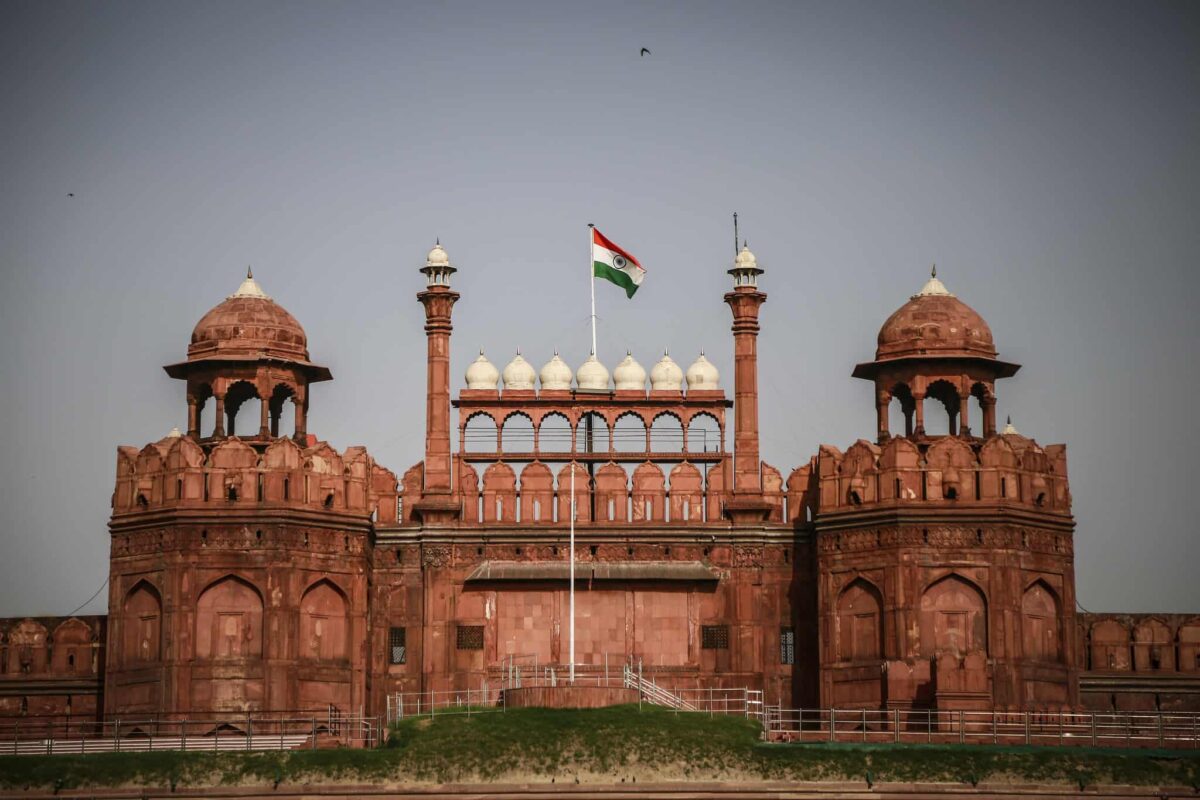
How to travel from Delhi to other cities in India
- Bus: The Maharana Pratap International Bus terminal at Kashmere gate is the central metro station in India. It only serves state buses. If you want to catch a private bus, then book your ticket at www.redbus.com. They will inform you where you need to wait for the bus, for example at the pillar under the metro line. (Do not laugh, this is India).
- Train: You will either take trains to other cities within India from the Old Delhi or the New Delhi Railway station. The Old Delhi Railway station is near Chandni Chowk, and the New Delhi Railway Station is near Pahar Ganj. India has no international train connection with any other countries anymore. Due to conflicts with Pakistan, it does not operate anymore.
Buy your train ticket online: https://www.irctc.co.in/nget/train-search
- Flight: There are three terminals at the Indira Gandhi International Airport. Terminal 1 and 2 only serve domestic flights, while Terminal 3 serves domestic and international flights.
2. day: Delhi- Jaipur (265km, 5 hours)
At least half a day, you will spend driving to Jaipur on the highway. Upon arrival, you can visit:
- Gaitor is a less-known attraction of Jaipur, but I highly recommend visiting. This is the cremation site of all Jaipur rulers starting with the founder of Jaipur. The nicely decorated “chhatris” on top of the ashes honor the former maharajas.
Tip: There are two Gaitors, one for the maharajas and one for the maharanis. The shrine of the maharajas is more attractive than that of the maharanis.
- Take a photo at Jal Mahal, the former hunting palace of the maharajas
- Visit the Bapu bazaar for good quality textile or Johwri bazaar for jewelry. Jaipur, famous for its gemstones, is the best place to buy some top-quality jewelry for a reasonable price.
- In the evening: go to watch a Bollywood movie at Rajmandir Cinema
3. day: Jaipur, the Pink City
- As a first thing, go to Amber Fort and take an elephant or jeep up to the entrance. The former royal residence of the Jaipur family has a stunning mirror palace and beautiful gardens.
- You can take the winding road up to the Jaigarh fort with the largest cannon on wheels.
- Jantar Mantar, the observatory of Jai Singh II, the founder of Jaipur, is an extraordinary attraction with monumental instruments in the center of Jaipur. The construction was world famous in its time and reflects his curiosity towards astronomy and mathematics.
- The City Palace, the current residence of the Jaipur royal family gives an insight into the life of a maharaja. The textile museum with daily and festive clothes, the weapon collection, the world’s largest silver urns, and the finely decorated reception hall are worth visiting.
- Most visitors only take a photo of the Hawa Mahal (Palace of Winds), the landmark of Jaipur that looks like a crown or a birdcage from outside. I recommend that you visit the summer residence of the royal ladies inside as well. The first two floors have the width of a room, but above that, it narrows to the wall-width. From the tower, the view of the Jantar Mantar, the City Palace. and the Aravalli mountains are stunning.
- Take a photo of the Albert Hall Museum constructed with a mix of European and Indian architecture.
- Go for a sunset view or dinner at Nahargarh fort. On top of the Aravalli range, you can have the best outlook of Jaipur at night while tasting some Indian specialties.
- You can also go for the evening puja in the modern Birla Temple made of white marble. Hindus get together, chant mantras, and give offerings to Vishnu and Lakshmi.
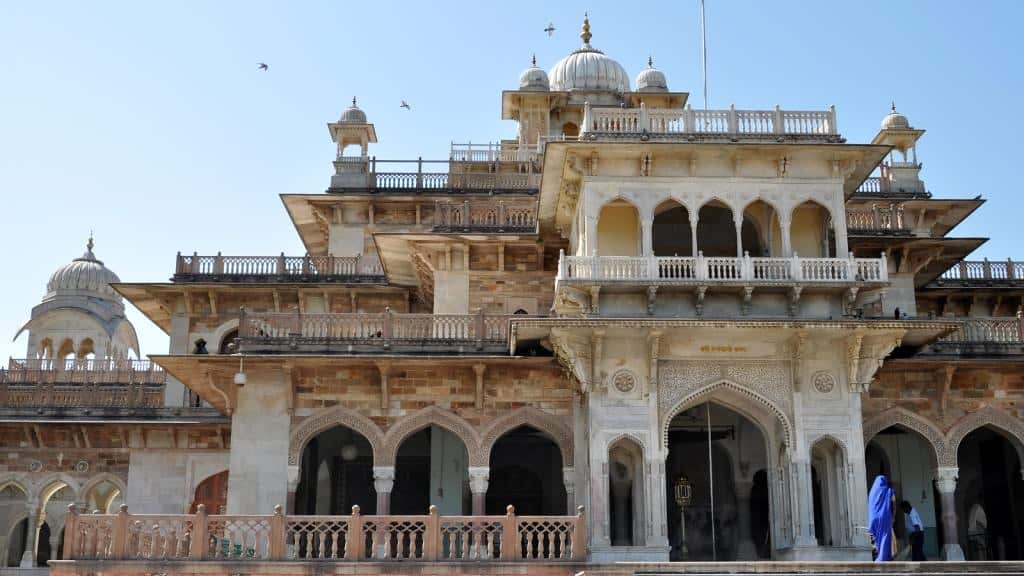
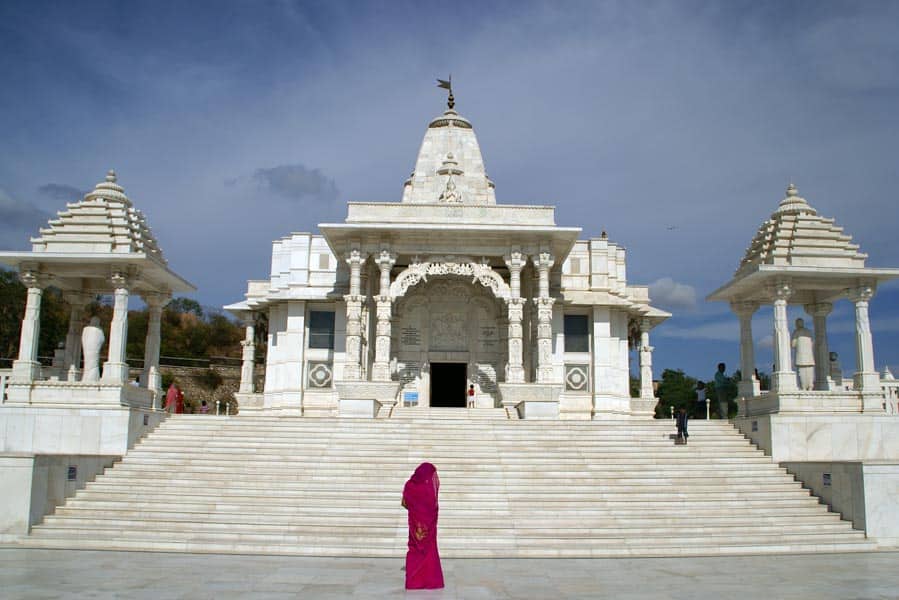
4. day: Jaipur- Fatehpur Sikri- Agra (245kms, 5hours)
- Galta, „the monkey temple”, is just outside Jaipur. It is a complex of shabby, palace-like Hindu temples nestled in the rocky mountains with pools used for ritual bathing. You can make a quick visit or stay longer and climb up to the sun temple. The temple is the abode for thousands of monkeys too.
- Stop in the Abhaneri village to see the ancient Harsat Mata temple and Chand Baori stepwell. There are countless stepwells throughout the country, but Chand Baori is one of the largest and deepest of all of them. The multifunctional step well could store the rainwater. Devotees also used it for ritual bathing before entering the nearby Harsat Mata temple. It may be one of the top sights of your tour in the Golden Triangle.
- Approximately 1 hour before reaching Agra, include Fatehpur Sikri in your itinerary.
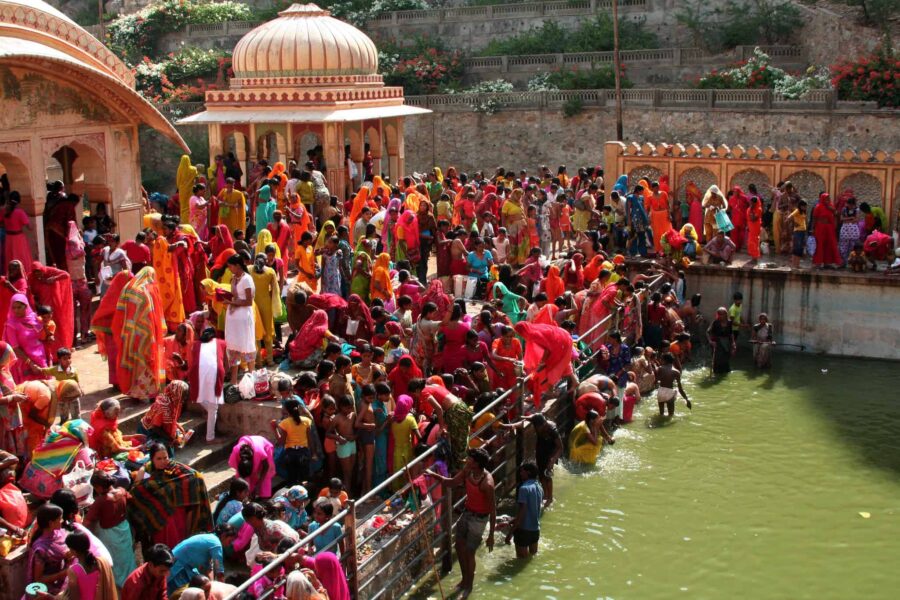
Fatehpur Sikri – the ghost town carved in red sandstone (between Agra and Jaipur)
The former capital of the greatest Mughal Emperor is a must-see on the way from Jaipur to Agra. There are several legends why Akbar, the greatest Mughal Emperor, suddenly constructed a new capital only to use it for 15 years. The works on the palace complex continued as long as he lived there.
He may have used it as a strategic point to conquer further territories. Or he wanted to express his gratitude to the holy man, Salim Chisti, whom he often visited for meditation. The Sufi (a sect in Islam) saint blessed Akbar when he had been hopelessly waiting for the birth of his heir. Soon after, Akbar fathered three sons.
The strangely scattered red stone palaces with intricate carvings are jaw-dropping. The second-largest mosque in India, the Friday Mosque (Jama Masjid), is located in Fatehpur Sikri. The mosques in India include a large open courtyard. Here stands the white marble shrine of Salim Chisti, the patron of Emperor Akbar, with his baldachin made of a seashell.
Due to the popular legend, women believe that a visit to the saint’s tomb will help them bear a child. There is a specific ritual they have to make. They spread a colorful shawl under the baldachin inside the shrine, spray rose petals on the top of that, and knot a thread on the marble lattice surrounding the canopy.
Opening hours: 6 am – 6.30 pm
Entrance fee: 550 INR + 25 INR for video
Rules of visit: you have to remove your shoes when entering the mosque. If your knees and shoulders are not covered, wrap a cloth around your waist and body.
Tips for visiting Fatehpur Sikri:
- On the way to the palace, every visitor has to walk through the bazaar to catch the bus to the entrance. Sellers can be painfully assertive, so try not to lose your patience. Inside the palace, you can walk around freely. But the mosque (Jama Masjid) stands some hundreds of meters away from the ensemble of palaces. As soon as you leave the complex, small children and other sellers stick to you. But this is not the best time for shopping.
- Once you drop an eye on a souvenir, they will chase you until you buy something. While you are busy with getting rid of the sellers, the pickpockets could open your bag. So better not to take valuable things with you in Fatehpur Sikri.
- As a public praying place, sellers are free to enter the mosque and hang on tourists during the visit.
- Despite all the inconveniences, I still believe it is worth visiting the mosque with the shrine. Though, you will not feel like spending too much time there.
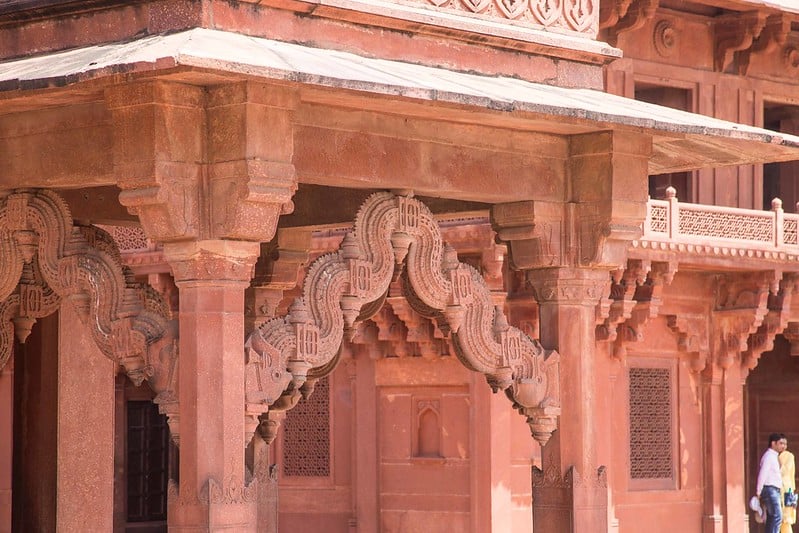
Keoladeo Bird Sanctuary – UNESCO World Heritage
If you are into birds, you can stay for one night in Bharatpur, a short drive from Fatehpur Sikri. Once, it was the royal duck hunting ground for the Maharajas and the British. In the 1980s, Keoladeo has been declared a national park and got listed as UNESCO World Heritage. During winter, many birds arrive from other parts of India and as far as Siberia. Heron, aigrette, pelican, kingfisher, peacocks, eagles, and other animals like spotted deer and buffalo are all found in the park.
You can hire professional nature guides who help you find the best photo points and give you a detailed explanation. Covering the park with bicycle rickshaws will add to the experience.
You can spend days in a hotel in Bharatpur and return more times. If you only want to have a shorter visit, go for a two hours-rickshaw tour early morning. After that, continue your journey to Agra.
One of your best options is to stay at the Laxmi Vilas Palace hotel in Bharatpur. The heritage hotel belongs to the family of the former local maharaja. It gives you a royal feeling without being fancy. Have a rest in the garden, enjoy the pool, and refresh yourself a bit before you continue to other busy cities, like Jaipur.
Tips for visiting: The best time to spot the birds is early morning, from 6.30 am.
Opening hours: 6am – 6pm (summer), 6:30 am: 5 pm (winter)
Entrance fee: foreigners 400 INR, video 200 INR. There are several possibilities to discover the park with a cycle rickshaw, hire a bike, go on a boat ride, go with a guide which cost some extra hundred Rupees.
5. day: Agra
- Go for a sunrise or sunset view of the Taj Mahal. The mausoleum of Shah Jahan and Mumtaz Mahal is one of the highlights of a Golden Triangle tour. Plenty of legends and secrets related to the construction of this stunning monument.
Everything you need to know before you visit the Taj Mahal
- Enjoy the best view of the Taj Mahal from the opposite side of the Yamuna River, the Mehtab Bagh („The Moonlight Garden”).
- The Tomb of Akbar, the greatest Mughal Emperor, is a multi-story structure in the center of a vast park in the suburb of Agra, Sikandra. Akbar and the Mughal Emperors built most of the world-famous monuments of India.
- Itmad-ud-daulah, also called „the baby Taj” preceded the Taj Mahal and probably served as an example for the Taj Mahal, hence its name. It comes as a surprise for visitors, who do not expect something similar to its larger counterpart.
- The Agra Fort, the massive red sandstone complex, located only 2 km from the Taj Mahal, was the royal seat of the Mughal Emperors right at the bank of the Yamuna at that time
Find more information about what else you can visit and do in Agra here.
Tip: If you stay an extra day, you can go for a day tour to Mathura-Vrindavan twin cities, where Krishna was born and lived as a cowherd. They get very crowded during the Krishna festivals. Mathura and Vrindavan are also well-known for their incredible way of celebrating the festival of colors, Holi.
6. day: Agra–Jhansi-Orchha
- Take the early morning train from the Agra Cantonment (AGC) railway station to Jhansi. The Shatabdi Express train departs every day at 07:50 am from Agra and arrives in Jhansi at 10:50 am. Other trains leave every half an hour from Agra to Jhansi and take 4-5 hours to Jhansi. After that, Orchha is 13 km from Jhansi. There are autorickshaws or cabs available at the railway station.
- Go to the Ram Raja temple for the evening aarti (fire ceremony)
7. day: Orchha – Khajuraho (178 km, 4 hours)
Somewhere right in the middle of giant India, along the Jhansi- Khajuraho touristic itinerary, lies a hidden gem, Orchha. It is not part of the Golden Triangle, but I recommend extending your two-week itinerary including the Golden Triangle with Orchha, Khajuraho, Varanasi, and Amritsar.
Orchha means “hidden”. With a population of less than 10 000, it is a place that you should not skip by taking an internal flight to the next famous destination. You have to stop in Orchha! Orchha’s simplicity brings the long-awaited peace and calmness during your trip. Instead of modern glass and marble hotels, traditional lodges and hotels are available. The most iconic, the Sheesh Mahal (Mirror Palace), provides the atmosphere of a former royal palace.
Orchha was the seat of the Bundela dynasty for 200 years (1531-1783).
Nestled in a forest, royal palaces and tombs of the 16th-17th century rise on the banks of the Betwa river.

The places to visit in Orchha
The Raj Mahal Palace is famous for the colorful murals that adorn its interior. They depict religious themes, scenes from court life, or incarnations of Vishnu Hindu deity.
Bir Singh Deo, one of the most powerful rulers of the dynasty, built the Jehangir Palace only to host the Mughal ruler, Jehangir. Massive towers reinforce each corner of the rectangular palace. There was once a fountain in the courtyard. The candlelight reflected in its water, and the walls plastered with crushed shells must have provided a dreamlike setting for evening entertainment. However, Bir Singh Deo was not satisfied with the palace erected in Orchha, so he had another one built 43 km away, the 7-storey Datia Palace. Strangely, not a single ruler ever occupied this 440-room palace.
The Rai Praveen Palace is the third famous palace in Orchha constructed in 1618 by King Indramani Singh for his musician-poet lover. The great Mughal ruler, Akbar once invited the legendarily beautiful Rai Praveen to his court in Delhi. But after seeing her infinite love and loyalty to Indramani, he let her go back to Orchha.
The impressive tombs of 14 rulers of the Bundela dynasty stand on the banks of the Betwa River. You can have the best view of them from the other side of the river at dawn and sunset when the tombs get reflected in the water.
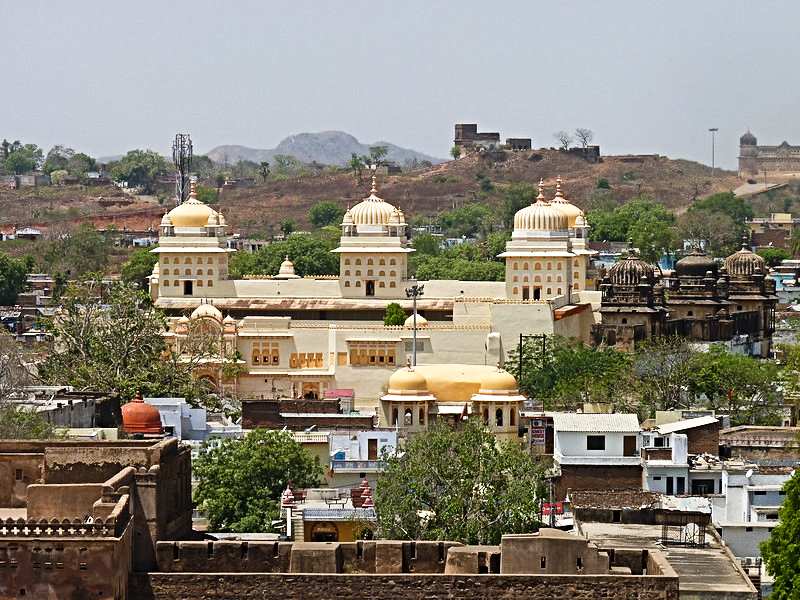
There is a reason why the Ram Raja temple looks like a palace at first sight. It once served as the residence of queens indeed. According to the legend of Orchha, the Hindu god Rama appeared to the Queen in her dream and informed her that he would not move to the newly built Chaturbhuj temple. Therefore, they converted one part of the palace into a temple, where Rama continued to stay. Thus, Orchha is the only place in India where he is revered as a king and not a god. Any time of the day, locals line up to give their offerings to King Rama. Unusually, guards watch the temple entrance and salute with their guns for Rama every day. Lord Rama usually holds a bow in his hand. But in Orchha, Rama is worshipped as a royal incarnation, he carries a sword and shield instead and his statue is allowed to “sleep” 3 hours more each morning than any other temple deity.
You can stroll around the bazaar in front of the temple in the very center of Orchha and buy some colorful textiles, jewelry, and all sorts of Indian products in full tranquility.
Above the busy square rises the Chaturbhuj temple, which was empty for a long time, as mentioned above. Today, it displays the statue of Radha and Krishna Hindu Gods. Climb up some floors and enjoy the beautiful view of Orchha!
An adventurous 10-minutes long auto-rickshaw ride leads to the Lakshminarayan Temple. Beautiful colorful frescoes depicting Hindu gods, famous scenes from the Indian epics of Ramayana and Baghavad-Ghita, and other historical events decorate the walls and ceilings.
With its fountains, Phool Bagh Garden serves as a summer retreat for the Orchha rulers. They created the park in memory of Prince Hardaul Dinman, who committed suicide when he was only 23 to save the Queen’s honor. 900 Bundela subjects are said to have ended their lives and followed the prince after hearing about the incident.
And if you are a nature lover, you can also go rafting, kayaking on the fast-flowing Betwa River, or take a hiking or bicycle tour along the nature trail in the Orchha Wildlife Sanctuary.
In the afternoon, drive to Khajuraho (4-5 hours, 3500 INR) or take a train (5-7 hours). The fastest train via (Mahoba) leaves at 7:10 am and arrives in Khajuraho at noon. If you take the train, stay one more night in Orchha.
8. day: Khajuraho
- Visit the Eastern and Western group of temples in Khajuraho, famous for its intricate carvings, some of them depicting erotic scenes from the Kamasutra.
- Stroll around Khajuraho village
- Attend the evening light & sound show narrated by the Bollywood icon Amitabh Bachan at the Western group of temples.
Show timing:
From October to February: 6:30 pm (English), 7:40 pm (Hindi)
From March to September: 7:30 pm (English), 8:40 pm (Hindi)
Entrance fee: 250 INR for Indians, 700 INR for foreigners
Take the night train from Khajuraho to Varanasi BSB KURJ LINK EX(21108) (~1200 INR)
- Departs on Sunday, Tuesday, and Friday at 11:50 pm
- Arrives in Varanasi at 11:05 am
9. day: Varanasi, the most divine city of India
- Check the pleasant green neighborhood of the legendary Banaras Hindu University, one of the largest in Asia, and visit the New Viswanath temple
- Stroll around in the narrow alleys of Varanasi and taste the delicious chaat, paan, kachori, lassi, and other delicacies of Banaras
- Do some shopping at Gowdowlia, Lallapura, or Nai Sadak market
- Attend the Ganga aarti after sunset at the Dashashwamedh Ghat from a boat or the riverbank.
Read the article about how to spend two days in Varanasi
10. day: Varanasi
- Go on a boat ride early morning on the Ganga and observe as devotees start their day with ritual bathing, praying, and meditating.
- Visit the most important temples of Varanasi starting with Kashi Viswanath Golden temple (pre-booking needed)
- Visit one of the death hostels like Mumukshu Bhawan
- Spend the afternoon in Sarnath and visit Buddhist stupas, temples, and the Archeological park
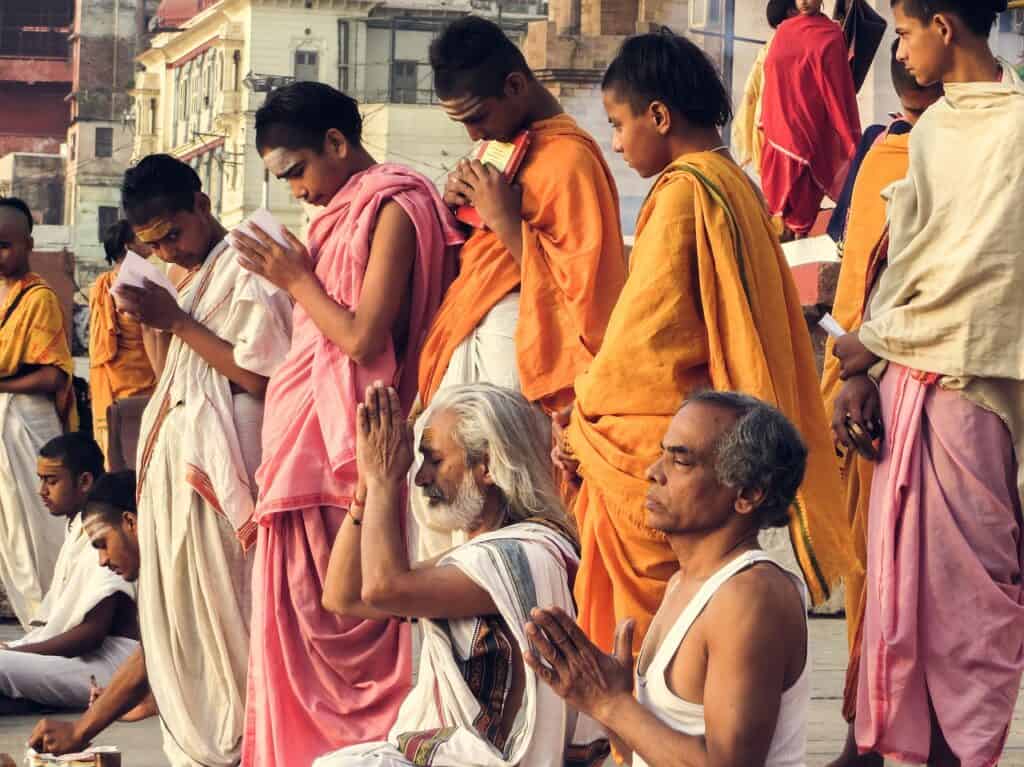
11. day: Delhi
- Take a morning flight from Varanasi to Delhi (4000 INR)
Flight No. SG-2004 (Spicejet)
Departure from Varanasi at 08:20 hours
Arrival in Delhi at 09:55 hours
- Visit the Qutub complex with the tallest brick minaret (72.5m) and the 1600-year-old iron pillar
- The Tomb of Humayun is the first monumental mausoleum built for a Mughal ruler
- If you are on a Saturday or Sunday in Delhi, visit the Main Building and the Central Lawn o the President House (Rashtrapati Bhavan). It has only been opened for the public recently. The visit is subject to pre-booking: http://rashtrapatisachivalaya.gov.in/rbtour/
- Take a photo of the India Gate, built as a war memorial and resembles the Triumph Arch in Paris.
- The most beautiful Lakshmi Narayan Hindu temple is located some minutes’ drive from the India gate.
- Visit in the evening the illuminated Gurudwara Bangla Sahib Sikh temple and learn more about the Sikh religion
You take a flight back home from Delhi or extend your stay to Amritsar, the sacred city for the Sikh people.
12. day: Delhi-Amritsar
- Take a train from New Delhi Shatabdi Railway Station to Amritsar (the train runs every day, 900-1200 INR) as an extension of your two-week itinerary including the Golden Triangle.
Departure from Delhi: 07:20 am
Arrival in Varanasi: 1:45 pm
- The main attraction of Amritsar that attracts millions of visitors yearly is the Golden Temple. It is so unique that you should return more times during the day, both early morning and evening or during the day.
Amritsar, located in Punjab state, is the center of the Sikh religion. It is hard to describe what incredible atmosphere the Golden temple (Sri Harmandir Sahib) has. The principal temple of the Sikh people lies on the shore of a sacred lake in Amritsar.
Every Sikh temple (Gurudwara) operates a public kitchen (langar) that is open to people of any religion.
All you need to know about the Sikh religion
The langar of the Golden temple is the largest in the world serving 100 000 people daily. Regardless of their caste and religion, rich and poor sit and eat together on the floor as a symbol of equality and brotherhood. Sikh volunteers serve the freshly prepared food and wash up the dishes. The temple provides free accommodation for pilgrims in its guesthouses and inside the temple.
Maharaja Ranjit Singh covered the temple with 162 kg of 24-karat gold in 1830. Hence its name, the Golden Temple. In the 90s, it was renovated with 500 kg gold. The temple is below ground level, and the stairs go down when you enter. It means that devotees must be humble in front of God.
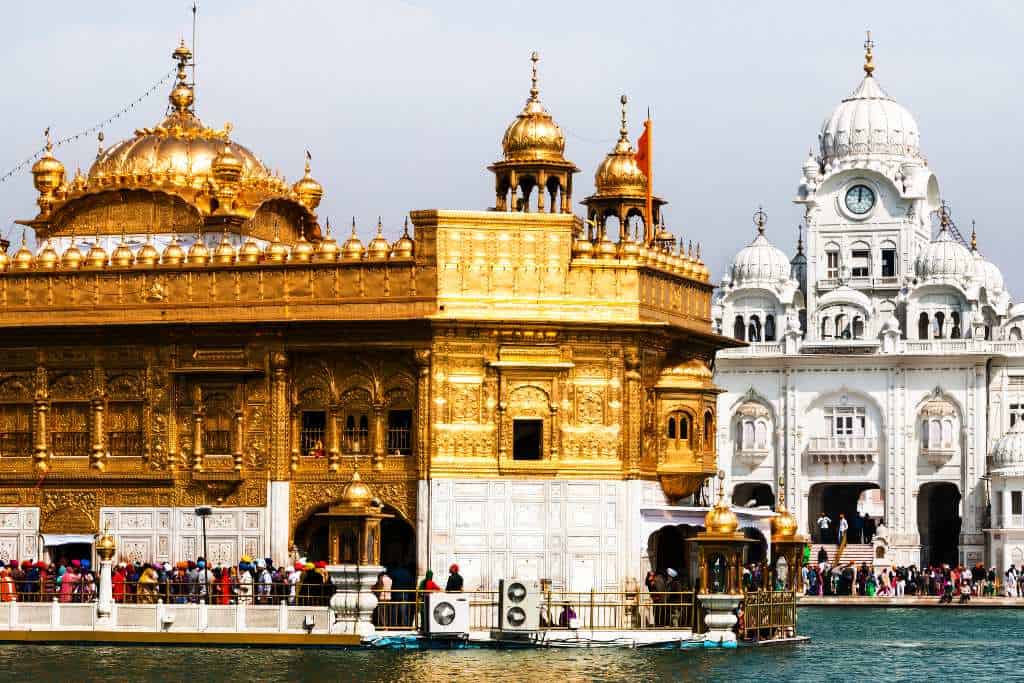
The temple is free to visit all day. Do not forget to leave some donations.
Tip: Have dinner with thousands of other people in the largest public kitchen (langar) on earth. It is a fantastic experience.
- Visit the Akal Takht (Throne of the Timeless One), the attractive modern multi-story building with marble inlay and golden-leaf dome as part of the Golden Temple Complex. It is one of the Five Takhts of the Sikhs, which functions as the judicial and administrative seat of the Khalsa (Sikh community). Sikh people can turn to the Takht with their spiritual and daily concerns. It got destroyed during the military Operation Blue Star launched by Indira Gandhi.
13. day: Amritsar
- Learn more about Sikh history at the Jallianwala Bagh memorial. The park was the scene of the public massacre committed by the British Army on 13th April 1919, the Punjabi New Year Day. General Dyer ordered to open fire on the peacefully protesting mass, and as a result, around 379 people died, and 1100 people were wounded. Since 1951, a stone memorial commemorates the massacre, one of the most painful moments of Sikh history.
- Durgiana is around 1 1/2 kilometer from the Golden Temple and looks like its replica in the middle of a sacred lake. The temple has impressive silver domes, hence its other name, the „Silver Temple”. The 100-year-old Durga temple is primordial for the Punjabi Hindus.
- Head to Hall bazaar for shopping, and to taste the famous Amritsari street food, especially the Amritsari Kulcha. It is a flatbread stuffed with potato or paneer rolled into a kulcha or naan shape. Apart from Kulcha, you can find a wide array of thalis, parathas, chola bathura, and lassi in the bazaar. Kesar Da Dhaba, Brothers’ Dhaba, and Ahuja Sweets (specifically for its lassi) are great choices to try local specialties.
- Watching the daily Wagah Border military parade is a must once you are in Amritsar. It takes place at the Pakistani border, just 30km from the Golden Temple, two hours before sunset.
Wagah border parade
The Attari border was the only road link between India and Pakistan till 1999 when another one in Kashmir was opened.
It is next to the Radcliff demarcation line that divided India and Pakistan after independence in 1947. Hundreds of thousands of Indians and Pakistanis crossed this border to find their new home in Hindu-Sikh India or Muslim Pakistan. The whole event starts with creating a patriotic atmosphere among the local spectators. “India”, “Pakistan” shouts the crowd with increasing enthusiasm alternately on two sides of the border. A competition of patriotism, loyalty, and proudness.
Then, the Indian Security Forces and the Pakistan Rangers line up on two sides of the border. As the sun sets, the gates open.
During the highly nationalist “Beating the Retreat ceremony”, the soldiers march with legs high up and try to intimidate each other but never crossing the borderline.
In the end, the soldiers lower the Indian and Pakistani flag, shake hands and close the gates again. The border parade is the symbol of rivalry and cooperation between the two nations. It is a unique attraction.
Wagah border parade timing: the parade starts at 5:15 pm in summer, and at 4:15 pm in winter.
Restrictions: bags are not allowed, but you can deposit them for 50 INR. Lighters and cigarettes are also not allowed. Do not forget to take your passport with you. They provide a separate section for foreigners in the first rows if you want to avoid the crowd.
How to go to the parade?
The cheapest is by shared minibus, which costs 100 INR (€1.30) per person return. You can buy the tickets from the touts on the road to the Golden Temple.
If you want to know more about the Punjabi culture, dances, music, cuisine, and handicrafts, and see typical mud houses spend a pleasant evening at the Sadda Pind cultural village is located just 8 km from the Golden Temple. Experience the authentic Punjabi celebration on your last evening of the extended Golden Triangle Tour.
14. day: Amritsar – Delhi
Take a train back to Delhi (Shatabdi Express)
Departure from Amritsar: 16:50
Arrival in Delhi: 23:15
Hope you find all the above useful for your two-week trip to the extended Golden Triangle in India. Leave me a message if you have any comments and questions.
Useful resources for your travel to India
Insurance: Safetywing insurance that covers COVID-related issues as well.
Train, bus and flight ticket: Book your train ticket at Indian Railways website, or 12Go which gives you the best option (train, bus, and flight) based on the city of departure or arrival.
For your flight ticket use Google Flights.
Accommodation: Booking.com and Hostelworld.com offer a wide choice of low and higher-budget hotels.
Local tours and tour packages: Viator and GetYourGuide offer transfers and several one or multi-day tours.

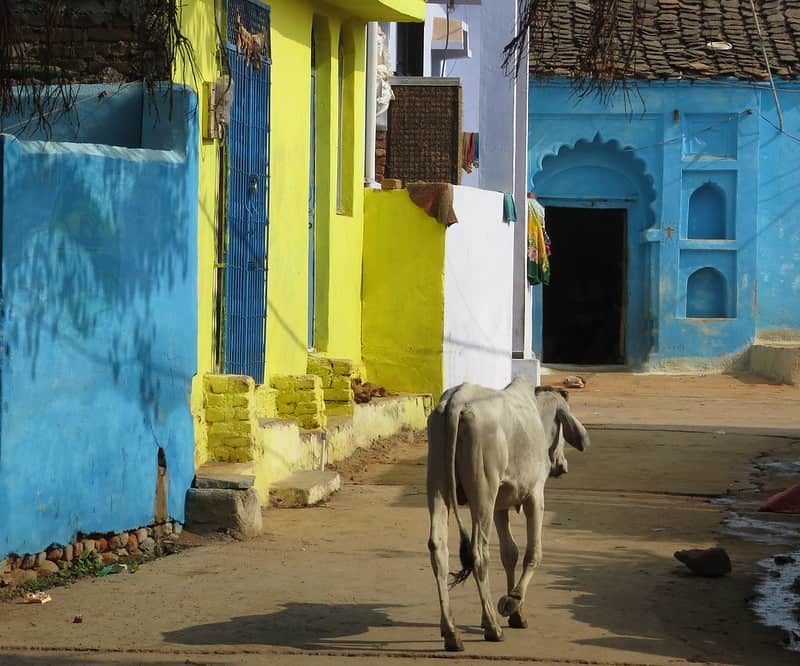

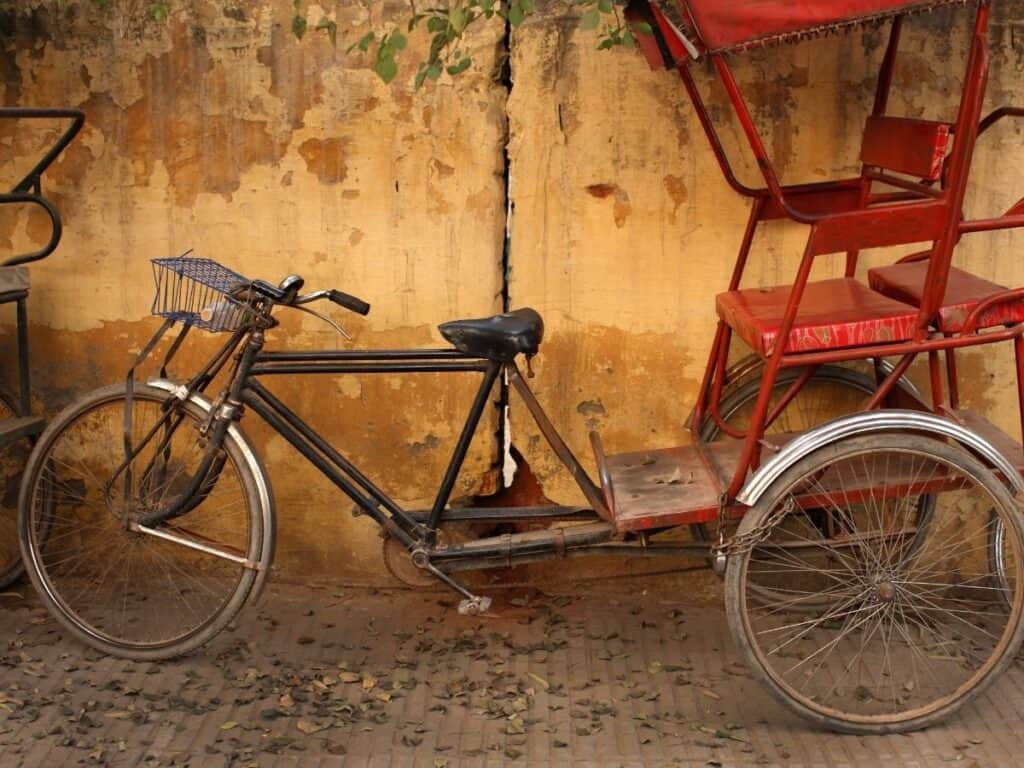
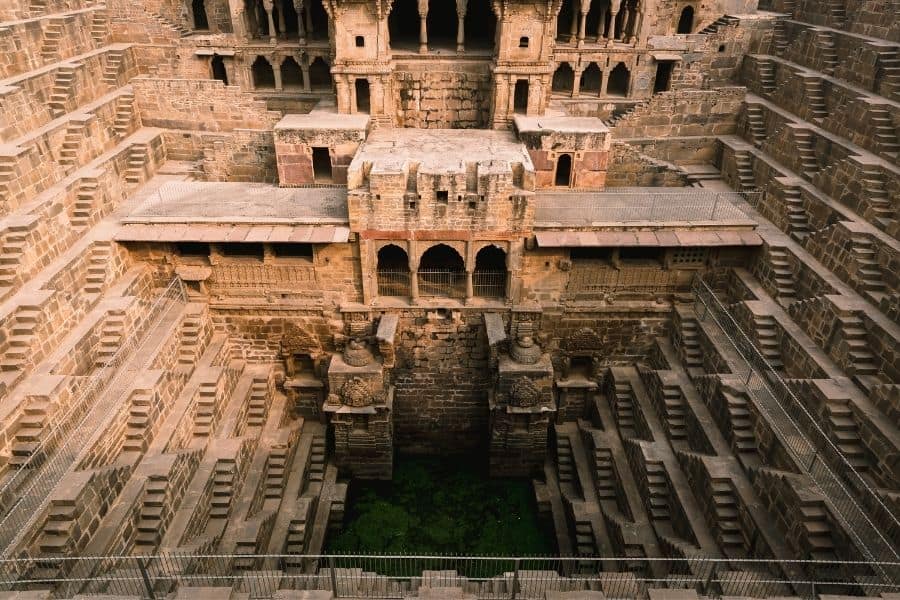
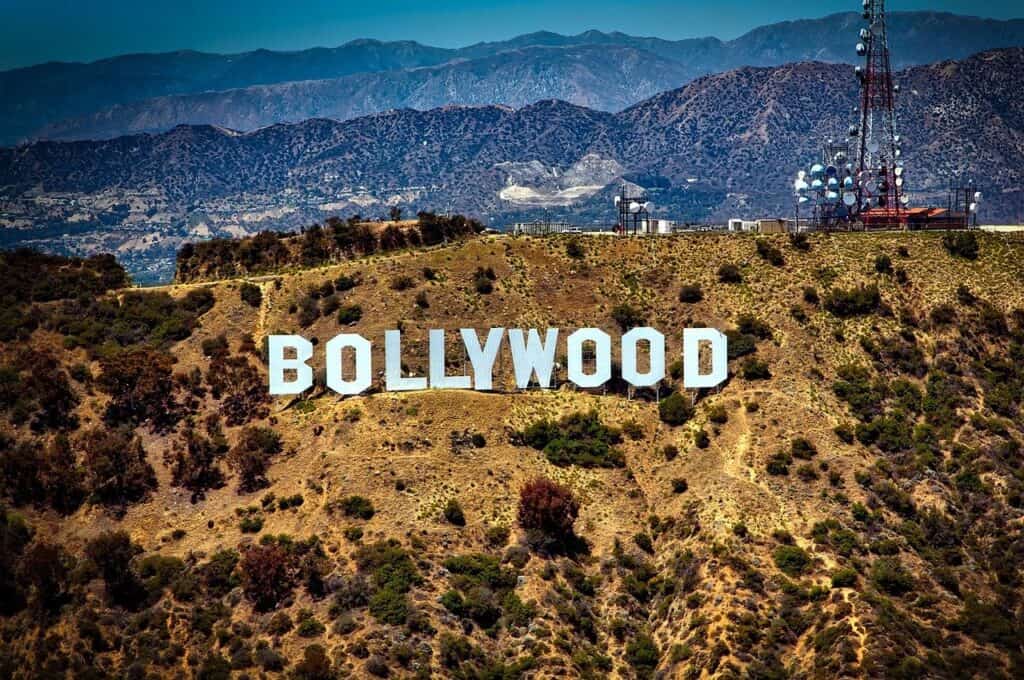
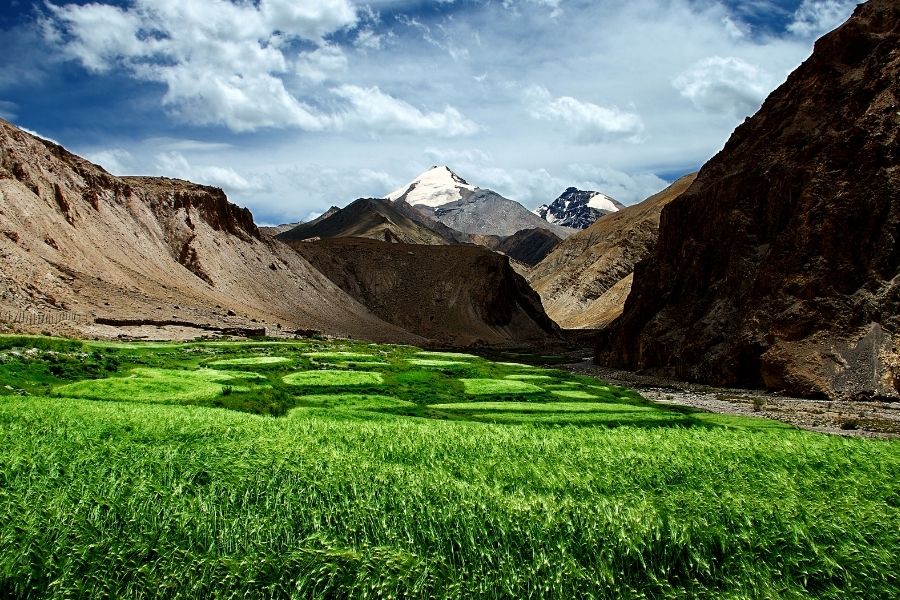
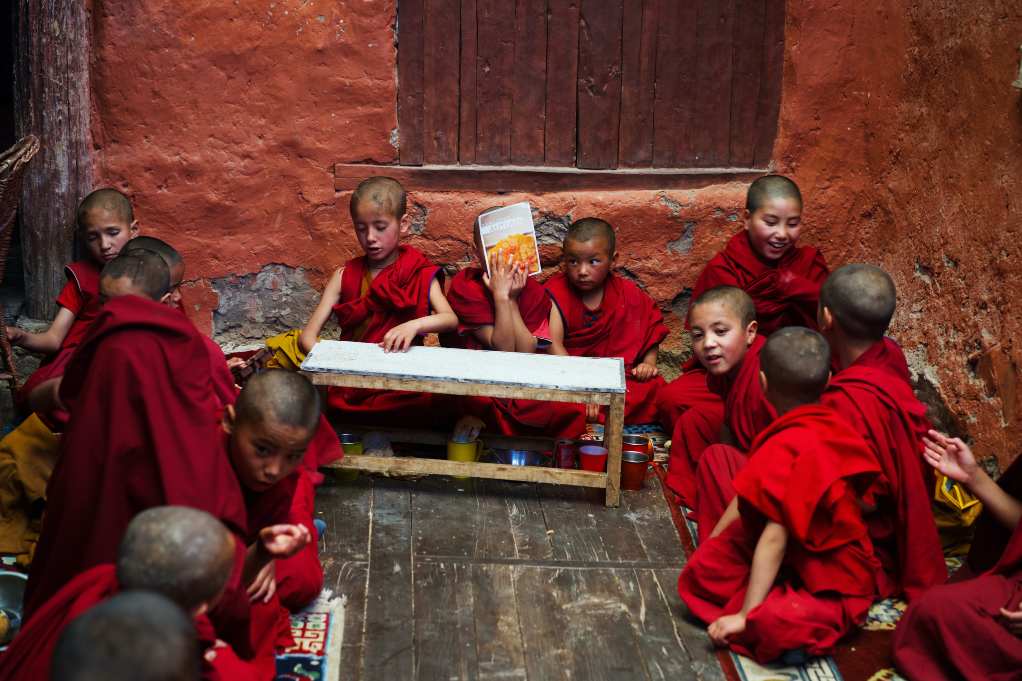
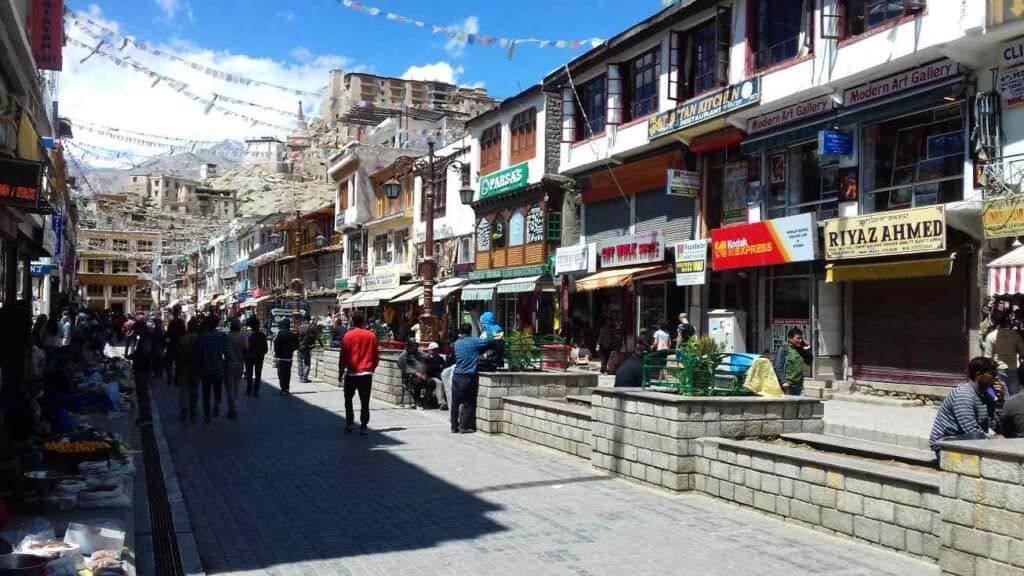
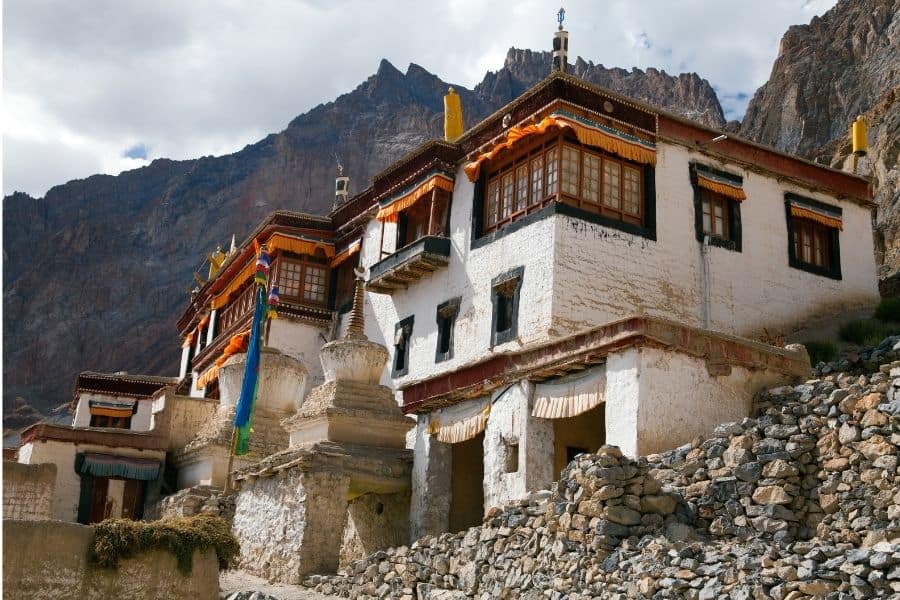
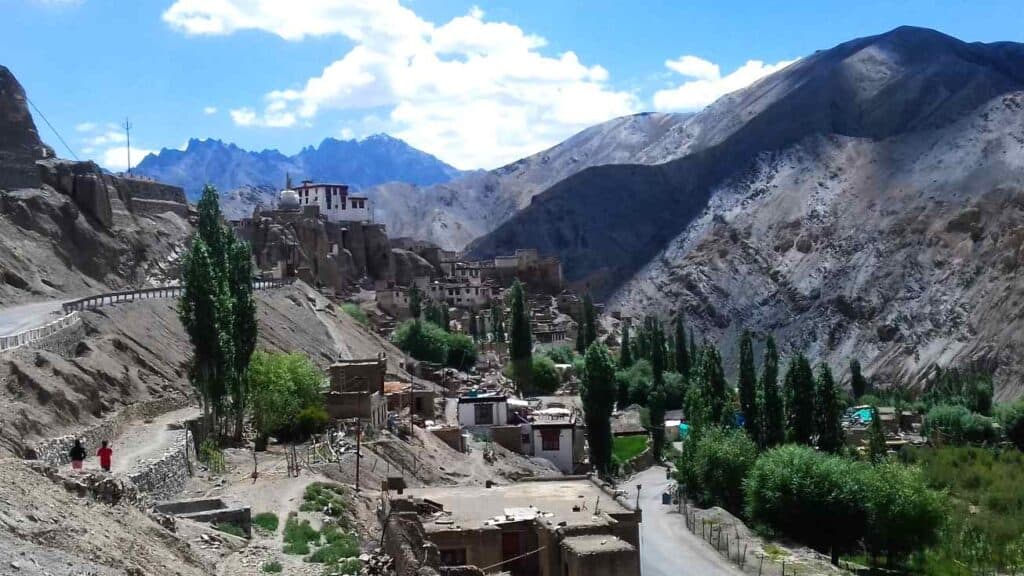
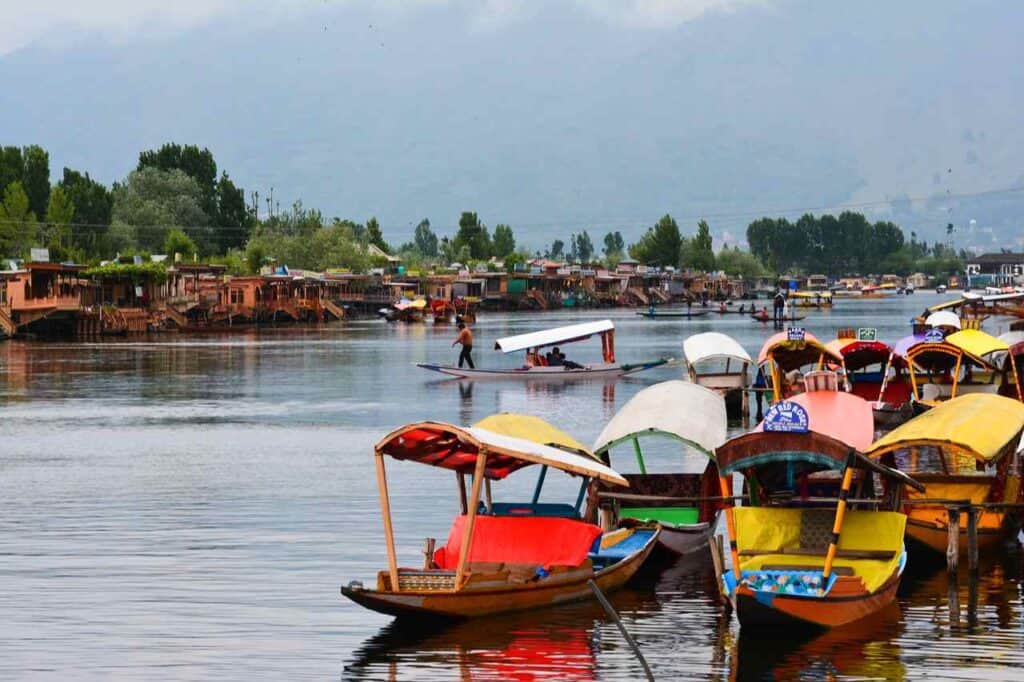
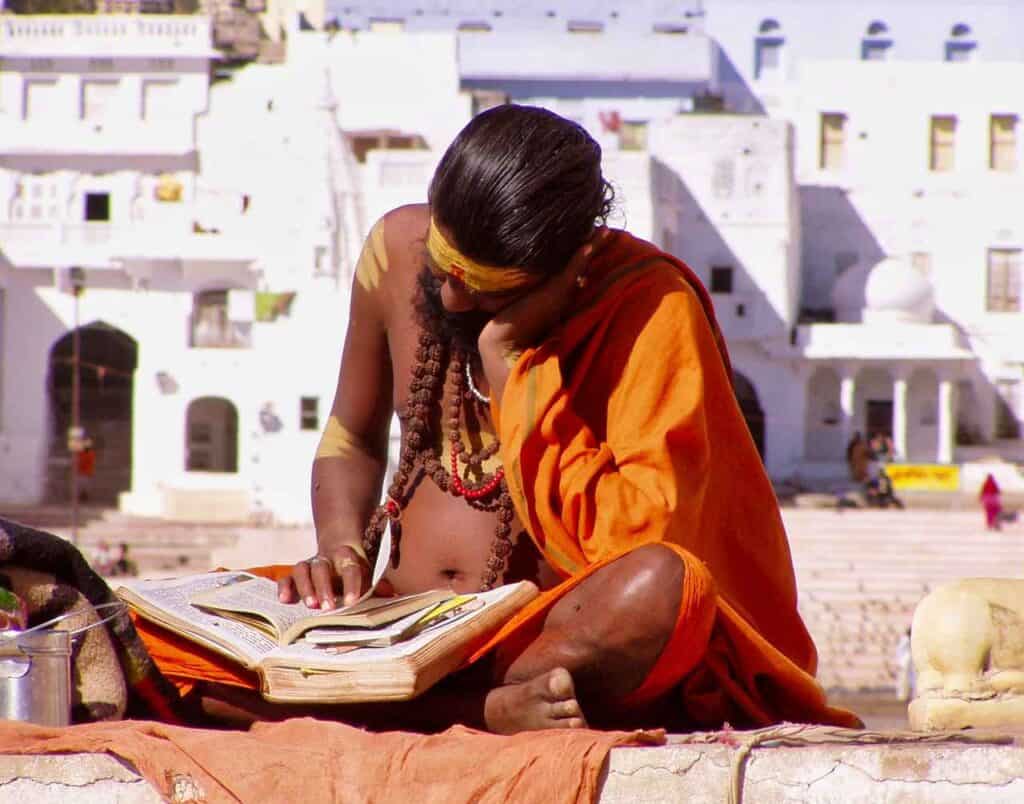
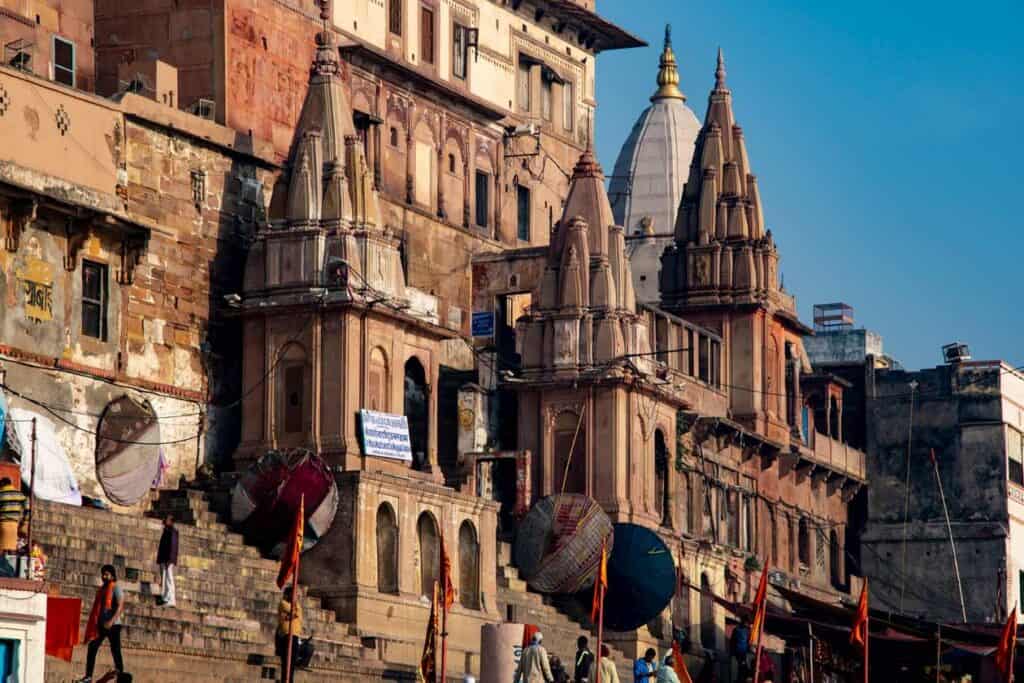
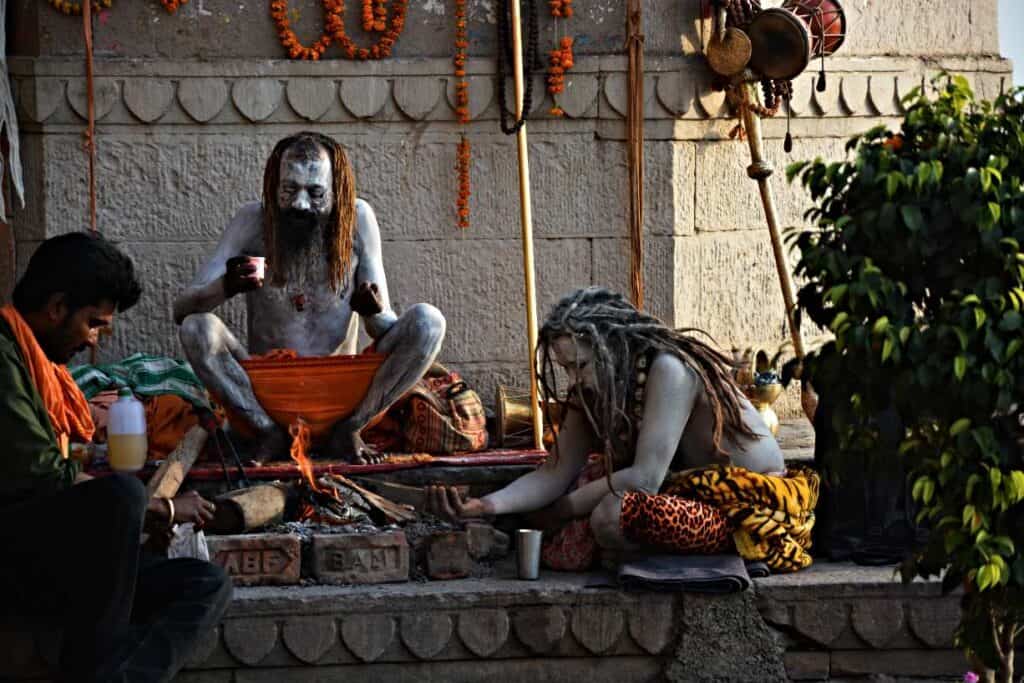
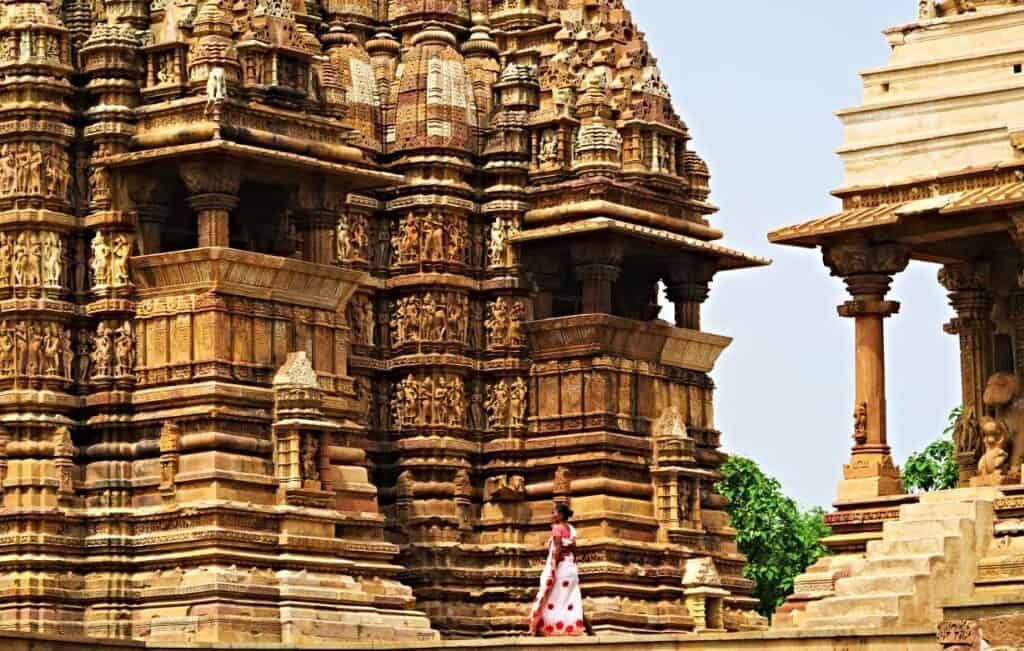
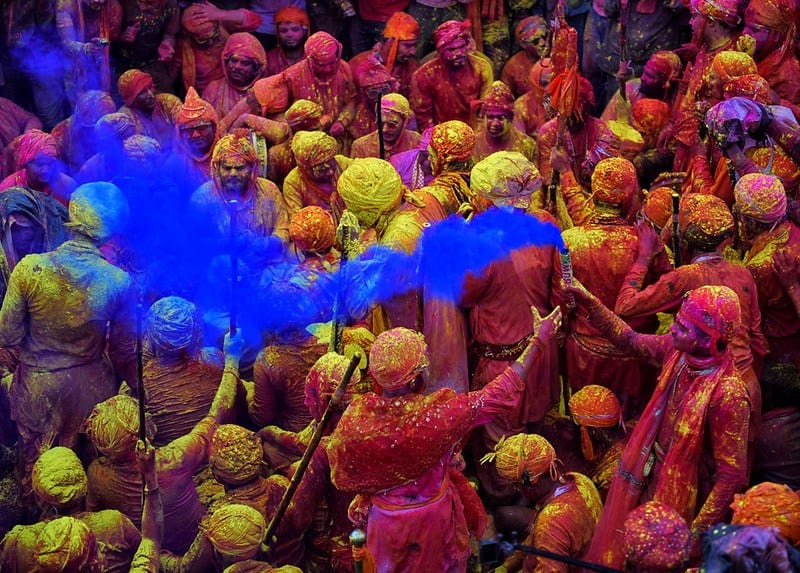
Pingback: Everything you need to know before visiting the Taj Mahal | Voice of Guides
Pingback: The most complete travel guide about the places to visit in Agra in one or two days | Voice of Guides
Pingback: Places to visit in Jaipur in two days | Voice of Guides
Pingback: The best places to visit in two days in Delhi (2021) | Voice of Guides
Pingback: Where to go shopping in Delhi – avoid the tourist traps! | Voice of Guides
Pingback: The best museums in Delhi that you should consider visiting | Voice of Guides
Pingback: The highlight of a visit to Delhi: The Akshardham temple | Voice of Guides
Pingback: Visit the temples in Vrindavan and Mathura in a day trip | Voice of Guides
Pingback: The western and eastern group of temples in Khajuraho | Voice of Guides
Pingback: The only guide you need to visit Varanasi in 2 days | Voice of Guides
Pingback: The most famous temples in Varanasi | Voice of Guides